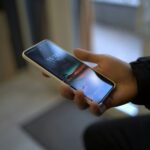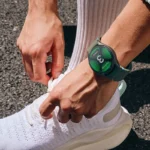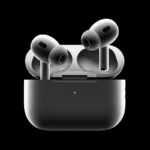Wondering if someone is checking your location on your iPhone? It’s a common privacy concern in our connected world. Many iPhone users share their location with friends and family through various apps but worry about who might be monitoring their whereabouts without their knowledge.
While iPhones don’t send direct notifications when someone checks your location, there are some ways to spot potential tracking activity. You can check for the location services indicator in your status bar or review which apps have recently accessed your location data in your privacy settings. The Find My app is one of the most common ways people share and check locations.
If privacy is a concern, iPhone users have options. They can disable location sharing completely or limit it to specific apps and people. Managing these settings helps maintain control over personal location data while still enjoying the benefits of location-based services when needed.
Can You See If Someone Checked Your Location on iPhone?
Let’s get straight to it: No, iPhones do not notify users when someone checks their location through the Find My app. If you’ve shared your location with someone, they can open the Find My app at any time and see where you are — and you won’t receive a ping, alert, or notification of any kind. This is by design, and Apple hasn’t introduced any feature that allows users to see how often or when their location is viewed.
How Location Sharing on iPhone Actually Works
Location sharing on iPhone is built around trust. When you choose to share your location, you’re essentially giving someone persistent access to track your position — but it doesn’t work like read receipts or Instagram story views. Apple’s system doesn’t log or display viewing activity.
The Find My app simply shows your live location to those you’ve approved. There’s no visible history of who checked your location or how often they checked it. The app assumes that if you’re sharing, you’re okay with that person checking in whenever they like.
What You Can See Instead
While you can’t see who’s checking your location, you can monitor who has access to it:
- Open the Find My app
- Tap the People tab
- Here, you’ll see everyone you’ve shared your location with
- Tap any contact to view or stop sharing
This is the only reliable way to keep tabs on who can see your movements. If you want more control, consider using the “Share Until End of Day” option or disable location sharing altogether.
Can You See If Someone Checked Your Location Through Apps?
Apps that request your location — like Google Maps, Uber, or weather apps — are required to show a location access icon in the status bar (a small arrow). While this only applies to app-level access (not individuals), it’s a helpful way to know if your location is being used behind the scenes.
Here’s how to check which apps recently accessed your location:
- Open Settings
- Go to Privacy & Security > Location Services
- You’ll see a list of apps with colored arrow icons:
- Purple Arrow: Used your location recently
- Gray Arrow: Used your location in the last 24 hours
- Hollow Arrow: May use your location under certain conditions
Although these don’t tell you if a person checked your location, it’s an excellent way to audit which apps are quietly pulling your data — and revoke permissions if needed.
How to Protect Your Location Privacy
If you’re not comfortable with someone being able to check your location at any time, the good news is you have options. Apple gives users granular control over location access:
To Stop Sharing Location with a Person:
- Open the Find My app
- Go to the People tab
- Select the person’s name
- Tap Stop Sharing My Location
To Disable Location Sharing Entirely:
- Go to Settings
- Tap your name at the top, then Find My
- Toggle off Share My Location
This will prevent anyone from seeing your location — even people you’ve shared it with before.
Can Someone Tell If You’ve Stopped Sharing?
Yes. If you stop sharing your location with someone, they’ll see a “Location Not Available” message under your name in the Find My app. There’s no subtle way to hide this; Apple makes it visible to the other person so they know you’ve cut off access. It’s blunt, but effective.
Can You Use Third-Party Apps to Track Who Checked?
There’s no legitimate third-party app that can track who viewed your iPhone location. Any app claiming to do this is either misleading or potentially dangerous. Apple’s privacy framework doesn’t allow apps that can monitor Find My activity like that — and sidestepping that would require serious breaches of iOS security or your Apple ID, which is not recommended or legal.
Bottom Line
If you’re sharing your location on iPhone, people you’ve approved can check it anytime — and you won’t know. Apple doesn’t show a view history, send alerts, or provide read receipts. That said, you’re in full control of who gets to see where you are, and you can disable or limit location sharing at any time. If privacy is a top concern, review your settings regularly and think carefully about who you share with — because once it’s on, they’ve got a window into your whereabouts 24/7.
Key Takeaways
- Location sharing status can be monitored through iPhone Settings and the Location Services menu
- The status bar displays indicators when apps are actively using or have recently used location services
- Users can enhance privacy by turning off Find My iPhone or adjusting individual app location permissions
Understanding iPhone’s Location Features
iPhones have sophisticated location tracking capabilities that allow users to share their whereabouts and find their devices. These features come with various privacy controls that let users decide who can access their location information.
Location Services and Privacy Settings
Location Services is the main system that controls how apps track your iPhone’s position. You can turn this feature on or off in Settings > Privacy & Security > Location Services. When enabled, a small arrow icon appears in the status bar when an app uses your location.
You can customize location permissions for each app with these options:
- Never: App cannot access location
- Ask Next Time: Prompts before allowing access
- While Using: Only tracks when app is open
- Always: Tracks even in background
To limit tracking, review app permissions regularly. Delete unused apps that have location access. For added privacy, you can disable “Significant Locations” which records places you visit often.
Find My iPhone and Location Sharing
The Find My app combines several location features into one service. It helps you:
- Locate lost devices
- Find friends and family
- Track AirTags and other accessories
To share your location with others, open the Find My app and select the “People” tab. Tap “Share My Location” and choose contacts. You can share temporarily (one hour, until end of day) or indefinitely.
Location sharing works two ways – when you share with someone, you can also see their location if they share back. This creates a mutual awareness of each other’s whereabouts.
To stop sharing, go to the person’s name in Find My and select “Stop Sharing My Location.”
Tracking and Notifications
Apple doesn’t notify you when someone checks your location. If you’ve shared your location with others through Find My, they can view it anytime without you knowing.
However, you can see who has access to your location. In the Find My app, the People tab shows everyone you’re sharing with. This list helps you monitor who can track you.
Some third-party apps might offer notification features, but Apple’s built-in location sharing doesn’t alert you to checks. The location services arrow in your status bar only indicates when an app is using your location, not specifically who is viewing it.
To protect your privacy, regularly review your sharing list and remove anyone who no longer needs access to your location.
Enhancing Location Privacy on iPhone
Protecting location data on iPhones requires active management of settings and the use of privacy tools. Privacy concerns have grown as more apps seek location access, making it essential to take control of what information your device shares.
Managing App Permissions and Location Services
iPhone users can check who has access to their location through the Settings app. To manage app permissions:
- Go to Settings > Privacy & Security > Location Services
- Review the list of apps with location access
- Choose the appropriate setting for each app:
- Never: Blocks all location access
- Ask Next Time: Prompts before allowing access
- While Using the App: Grants access only during active use
- Always: Provides continuous access (use sparingly)
For extra privacy, users can disable the Precise Location toggle for apps that don’t need exact coordinates. This provides approximate location data instead of pinpoint accuracy.
The System Services section at the bottom of Location Services contains additional tracking features that can be disabled, including location-based ads and iPhone Analytics.
Using Privacy Tools
Several built-in iPhone features enhance location privacy beyond basic permissions. Apple’s App Tracking Transparency feature forces apps to request permission before tracking activities across other apps and websites.
To stop location tracking entirely, users can toggle off Location Services. However, a more balanced approach involves:
- Using a VPN (Virtual Private Network) to mask IP address and location
- Browsing in private mode in Safari to prevent location history storage
- Enabling Limit IP Address Tracking in WiFi settings
- Using privacy-focused browsers like Firefox Focus or Brave
The Find My app settings should be reviewed regularly to ensure only trusted contacts have location access. Users can temporarily stop sharing by using Share My Location toggles.
Dealing With Tracking Apps and Third-Party Services
Hidden tracking apps can be a privacy concern. Users should regularly check for suspicious apps in Settings > Privacy > Location Services and look for the location arrow in the status bar, which indicates an app is using location data.
Signs of unwanted tracking include:
- Battery draining faster than normal
- Increased data usage without explanation
- Phone running hot when not in use
- Location arrow appearing unexpectedly
To protect against third-party tracking:
- Regularly check App Privacy Reports in Settings
- Review apps with Significant Locations access
- Turn off Cell Site Location features in carrier settings
- Check for and remove suspicious profiles in Settings > General > VPN & Device Management
For family sharing purposes, users should establish clear boundaries about when location sharing is appropriate and communicate openly about location privacy expectations.







